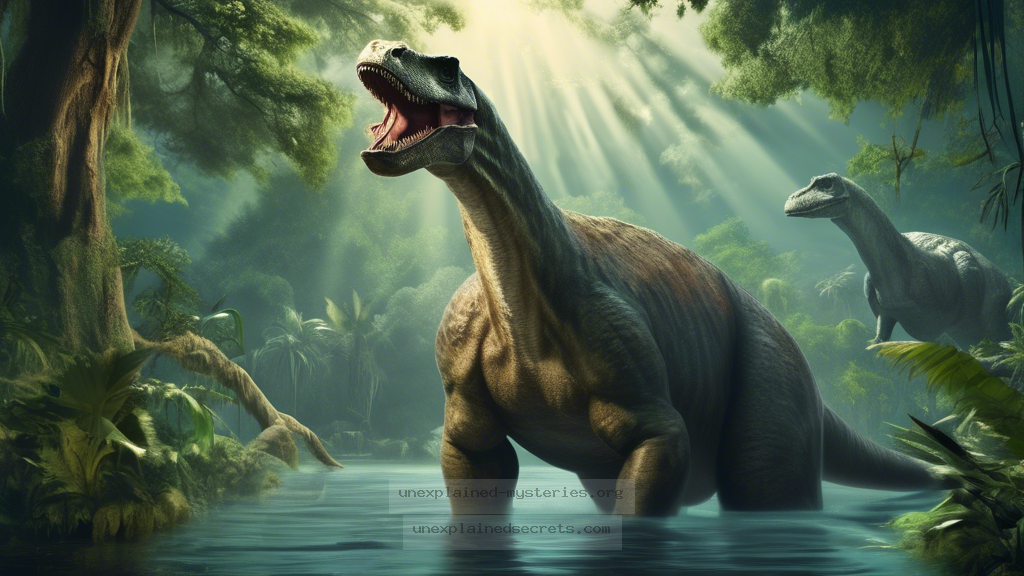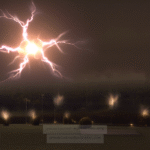What Happened to the Legendary Mokele-Mbembe: The Dinosaur of the Congo?
What Happened to the Legendary Mokele-Mbembe: The Dinosaur of the Congo?
The Mokele-Mbembe has captured the imagination of cryptozoologists and adventure seekers alike. This rumored dinosaur-like creature is said to inhabit the remote swamps of the Congo River Basin. But what evidence supports its existence, and why has the search for Mokele-Mbembe remained so elusive? This question not only delves into the realms of cryptozoology but also challenges our understanding of wildlife, evolution, and the mysteries that still exist within our world.
Historical Context of Mokele-Mbembe
First reported by Western explorers in the early 20th century, the legend of Mokele-Mbembe has deep roots in the folklore of the Congo Basin. Local tribes describe it as a massive creature resembling a sauropod dinosaur, with a long neck and tail. Historical accounts suggest that the creature inhabits river systems, particularly the Likouala River, and is believed to be a herbivore, primarily feeding on aquatic plants.
One of the most significant early mentions came from the American explorer and zoologist, Paul Du Chaillu, who described encounters with enormous creatures in the region. His accounts sparked interest in the possibility that dinosaurs might still roam the Earth. However, these reports were often met with skepticism, leading to a complex interplay of belief, myth, and scientific inquiry that continues to this day.
Core Concepts and Theories Surrounding Mokele-Mbembe
The fascination with Mokele-Mbembe often stems from broader theories in cryptozoology, which studies animals whose existence is not substantiated by mainstream science. The creature’s alleged resemblance to sauropods like Brachiosaurus and Apatosaurus raises questions about the survival of prehistoric species. Some theories suggest that Mokele-Mbembe could be a descendant or relative of these long-extinct creatures, having adapted to its environment over millions of years.
Moreover, the dense jungles and swampy terrains of the Congo are known for their biodiversity, which may conceal new species yet to be discovered. This context allows for the possibility that Mokele-Mbembe could represent an undiscovered or misidentified species, possibly a large reptile or even a hippopotamus, which could be misinterpreted based on local lore.
Practical Evidence: Sightings and Expeditions
Numerous expeditions have attempted to locate Mokele-Mbembe, with varying degrees of success. Most notably, expeditions led by the Cryptozoology Society and other organizations in the late 20th to early 21st centuries have documented eyewitness accounts, footprint analyses, and photographs. However, definitive proof remains elusive.
In 1981, a team led by Dr. Roy P. Mackal conducted a thorough investigation in the Congo. While they gathered numerous anecdotal accounts, their findings did not yield conclusive physical evidence. Subsequent expeditions in the 1990s and early 2000s reported similar results, with locals providing descriptions of the creature but little in the way of tangible proof.
Alternative Perspectives on Mokele-Mbembe
While many enthusiasts believe in the existence of Mokele-Mbembe, skeptics argue that the creature is a myth. They suggest that the cultural context and storytelling traditions of local tribes have exaggerated the creature’s characteristics over time. Furthermore, the dense and largely unexplored nature of the Congo makes it difficult to discern fact from fiction.
Some scientists propose that the reports of Mokele-Mbembe could be attributed to misidentified animals. For instance, large reptiles such as Nile crocodiles or even the African manatee might be mistaken for the mythical creature due to their size and behavior. This perspective emphasizes the importance of critical thinking and scientific rigor when examining such claims.
Common Misconceptions and Clarifications
One common misconception about Mokele-Mbembe is that it is exclusively a dinosaur. While many reports liken it to a sauropod, the creature could also represent a unique species that evolved separately in the isolated environment of the Congo. Furthermore, some people assume that all cryptids are hoaxes or fabrications; however, many cryptozoologists argue that unexplained phenomena deserve investigation.
Additionally, the notion that local tribes are merely fabricating stories is often challenged. Many tribal cultures have rich traditions of oral storytelling, and the descriptions of Mokele-Mbembe may hold cultural significance that transcends mere myth. Understanding these narratives can provide profound insights into the ecology and history of the region.
Best Practices for Investigating Cryptids
For those interested in investigating the Mokele-Mbembe or other cryptids, several best practices can enhance the search. A multidisciplinary approach that incorporates ecology, anthropology, and local knowledge is crucial. Here are some recommendations:
- Establish rapport with local communities to gain insights and firsthand accounts.
- Document all encounters meticulously, including photographs, audio recordings, and physical evidence.
- Collaborate with scientists and researchers from various fields to analyze findings critically.
- Maintain an open mind while remaining skeptical to distinguish between credible evidence and folklore.
Future Developments and Ongoing Research
The search for Mokele-Mbembe is far from over. Advances in technology, such as drone surveillance and environmental DNA (eDNA) analysis, could revolutionize the way we conduct cryptozoological research. These tools can help researchers cover vast areas quickly and analyze genetic material from the environment, potentially identifying new species or confirming the existence of elusive cryptids.
Moreover, the growing interest in conservation efforts in the Congo Basin may lead to increased funding and support for research expeditions. As biodiversity becomes a global priority, the quest for Mokele-Mbembe may see a resurgence, offering new hope for those who believe in its existence.
Conclusion: The Mystery of Mokele-Mbembe Endures
The legend of Mokele-Mbembe presents a captivating intersection of folklore, science, and the enduring human fascination with the unknown. While definitive evidence remains scant, the stories and theories surrounding this creature invite continued exploration and curiosity. Whether Mokele-Mbembe is a surviving dinosaur, a misidentified animal, or an artifact of cultural mythology, its mystery serves as a reminder of the wonders that may still exist in our world.
As we venture into the uncharted territories of our planet, the quest for Mokele-Mbembe encourages critical thinking, open-mindedness, and respect for the diverse narratives of the cultures intertwined with these enigmatic legends. The pursuit of understanding remains at the heart of what it means to be human, and the Mokele-Mbembe stands as a testament to our quest for knowledge in a world filled with mysteries yet to be solved.
Other Articles
What Really Happened During the Mysterious Dyatlov Pass Incident?
Recent Posts
- What Happened to Flight MH370? The Conspiracy Theories That Still Haunt Us
- What Secrets Lurk Within the Walls of the Infamous Trans-Allegheny Lunatic Asylum?
- What Evidence Supports the Existence of Bigfoot in the Pacific Northwest?
- What Happened to the Indus Valley Civilization? Unraveling the Mysteries of Ancient Urban Life
- Can Telepathy Be Scientifically Proven Through Laboratory Evidence?







